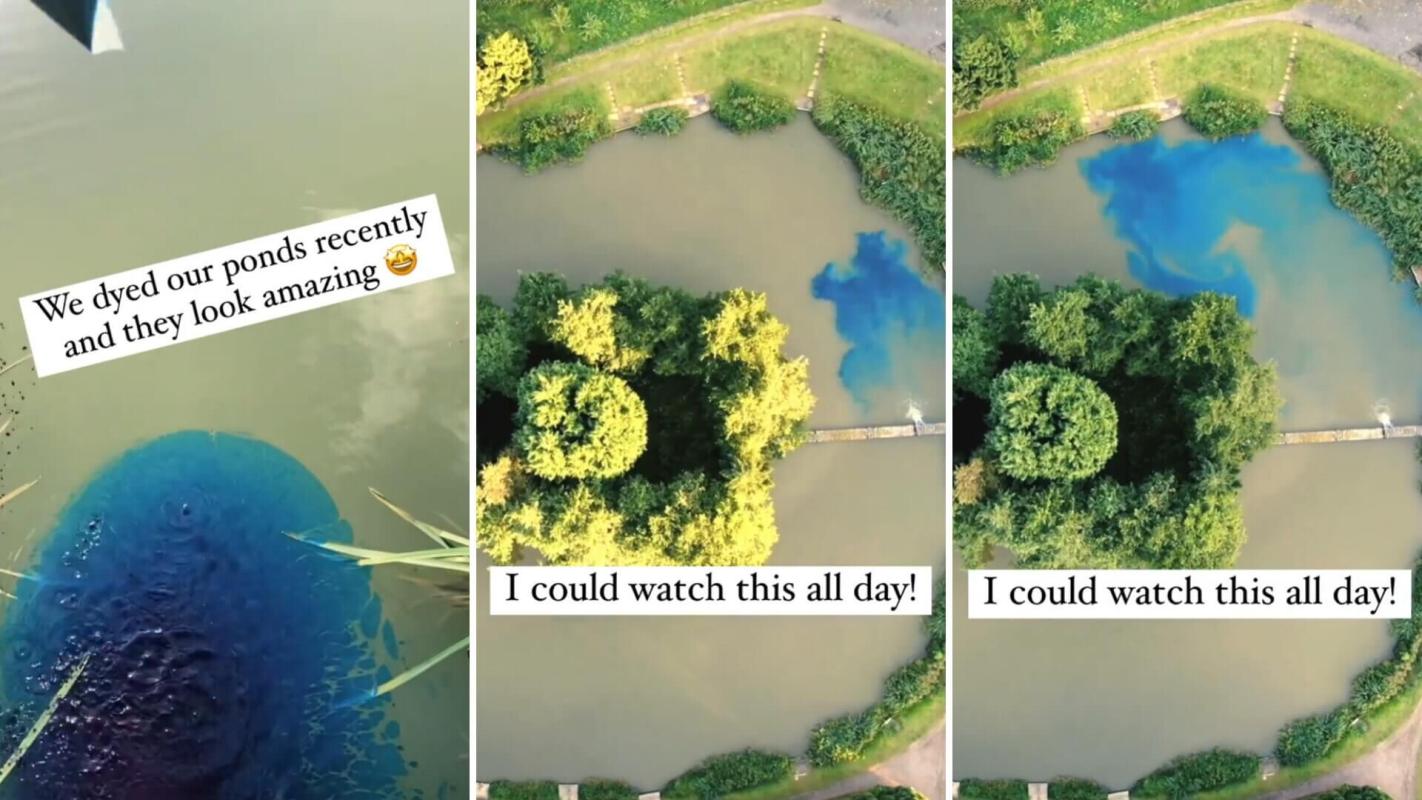For pond owners who often lose fish to predators and algal blooms, there's a solution that comes up again and again: pond dye. Regular pond dyeing is a simple step to keep a pond from dying – and as a bonus, it makes the water look great!
What is pond dyeing?
Pond dyeing uses specially-made food dyes that are safe for fish and other pond life such as frogs and aquatic plants.
Owners simply add a dose of liquid or powdered dye to tint the water, then reapply it every month or two to keep the color strong. Dyes come in varying shades of blue, blue-green, and even black.
In one viral video, the Woodend Farm Complex @woodendfarmcomp showed what pond dyeing looks like in action.
"We dyed our ponds recently and it looks amazing," the farm captioned its Instagram Reel. "I could watch this all day."
Why add dye to a pond?
The main reason for pond dyeing is to limit the growth of algae in the water. Algae rely on sunlight for food, but when it gets too much of those things, it can bloom — meaning that too much of it grows all at once.
Algal blooms not only turn the water cloudy green or brown, but they also clog the gills of fish and cut off sunlight to aquatic plants. For these reasons, they can kill most living things in a pond.
Swimming pools and fountains generally contain added chemicals, like chlorine, to prevent algae from growing at all. However, in a pond, algae play an important role in the food chain. According to the USDA, algae produce fish food, consume carbon gases given off by fish, and release oxygen that fish need to breathe through their gills.
Instead of preventing all algae growth, owners need to balance the amount of algae in the water to allow other pond life to thrive. Pond dye does this by filtering sunlight as it travels through the water, reducing the amount that reaches the algae so it can't grow out of control.
The color and strength of the dye determine how much of an effect it has on the pond's ecosystem. The darker the dye, the more sunlight it blocks, and the more slowly the algae will grow.
TCD Picks » Upway Spotlight

How else does dye help?
Besides controlling algae growth, pond dyeing also helps fish escape predators. The darker water makes it easier for fish to hide from raccoons, cats, turtles, foxes, possums, otters, frogs, and birds — all the major predators of pond fish.
Finally, many owners love how their pond looks with dye in it. There's a wide range of colors available to create the ideal look for any landscaping design.
Follow The Cool Down onInstagram and subscribe to ournewsletter.














